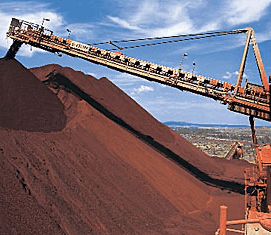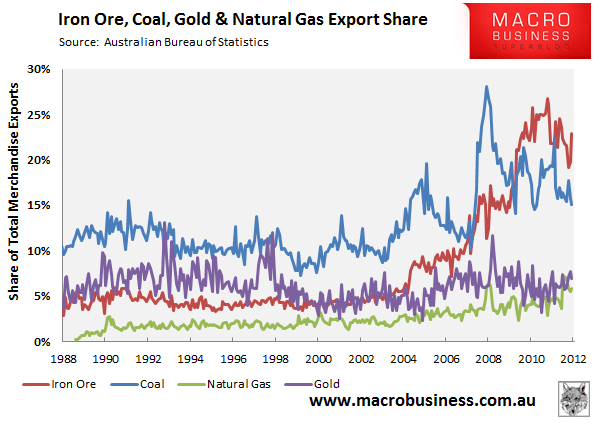
The biggest news over the festive break was the ongoing surge in iron ore prices, which have risen by more than $US30 per tonne since December. Iron ore is Australia’s biggest export commodity (see below chart) and any increase in prices flows directly into national disposable income, boosting company profits, government revenues, incomes and employment.

Overnight, the iron ore price jumped another 3% to $158.82 per tonne, which is the highest level since October 2011. From the AFR:
The benchmark iron ore price has surged overnight despite a dour market mood, helping the Australian dollar maintain its strong position around $US1.05.
Iron ore is trading at $US158.82 this morning, its highest level since October.
The Australian Financial Review reported on Tuesday there is strong demand for Australian iron ore from Chinese steel mills panicking over vanishing spot iron ore supplies from India and fearing cyclones will disrupt supply.
Trade figures released yesterday saw a 6 per cent increase in iron ore exports for the month of November, even as Australia recorded its biggest monthly trade deficit in more than four years.
HSBC Australia chief economist Paul Bloxham said on Tuesday high commodity prices were “the new normal”.
I always get nervous when I read comments like “new normal” or “this time it’s different”, as more money has been lost via such beliefs than at the point of the gun. Nevertheless, the current surge in iron ore prices is very welcome news for Australia, which has largely hitched its economic fortunes to this commodity and, by extension, Chinese fixed asset investment.
The longer-term picture has not changed in my opinion, however. Global iron ore supplies are set to rocket over the next few years, which should, other things equal, supress prices. China’s economy, too, will at some point have to rebalance its economy away from fixed asset investment-led growth towards consumption-led growth, which is necessarily less commodity intensive.
But for now, let’s enjoy our day in the sun and the good fortune that has been bestowed on what is still (for now) “the Lucky country”.

